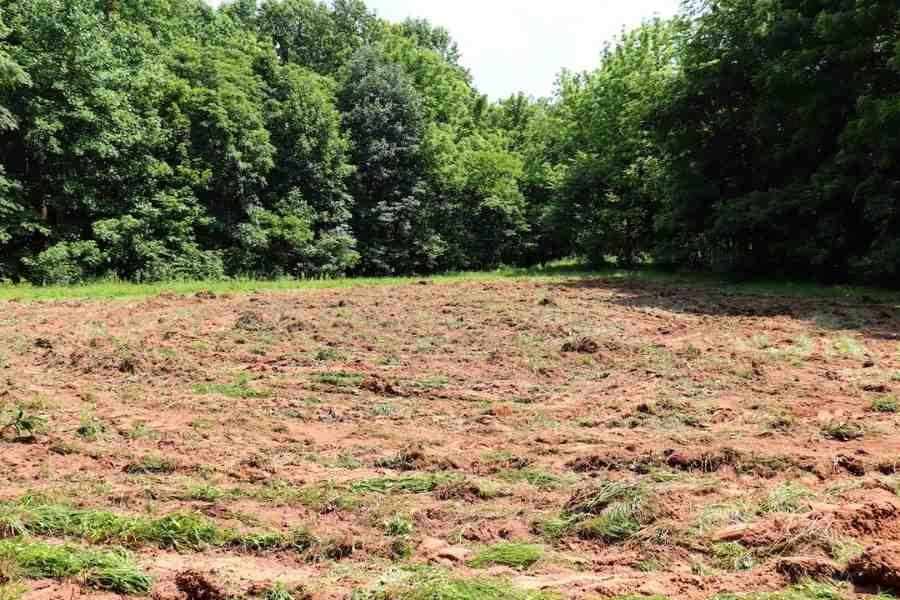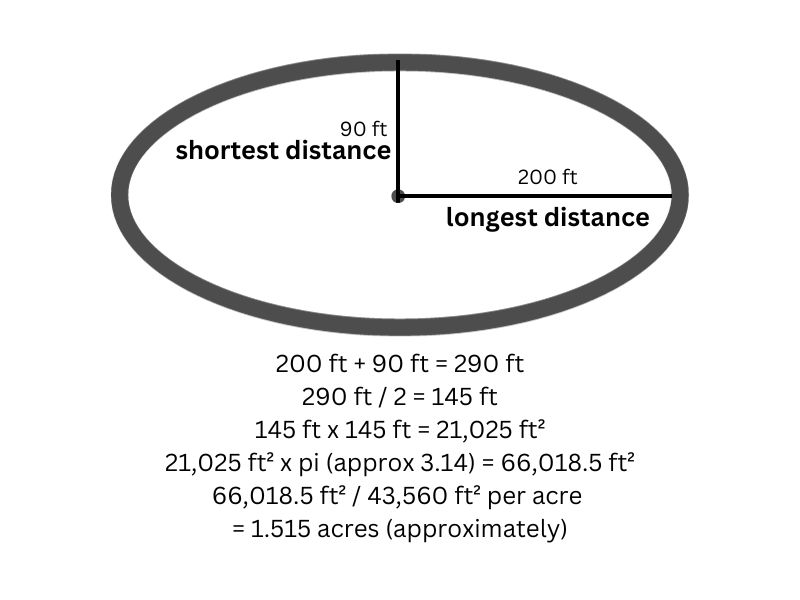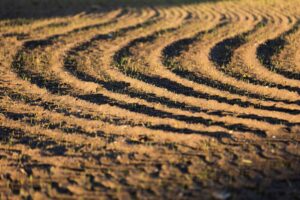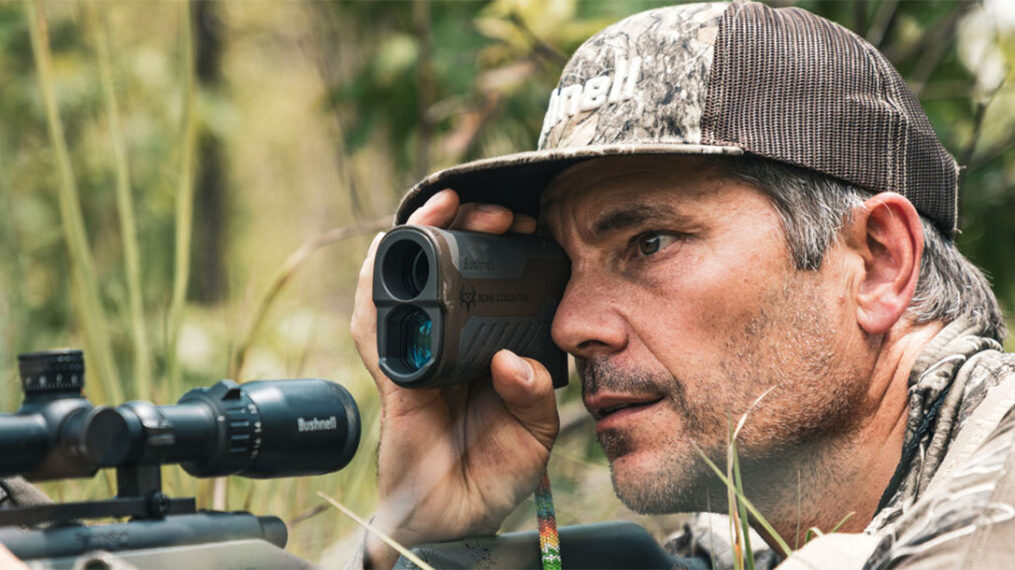You know what they say, you reap what you sow, and when it comes to planting food plots, this couldn’t be truer.
Knowing how much seed to plant can feel like a puzzle.
The right balance is critical: sow too much, and you’re wasting valuable resources, too little, and your efforts might not bear fruit.
In this discussion, we’ll be breaking down the complexities, providing you with a clear roadmap to determine the right amount of seed for your specific needs.
Key Information
How Much?
5-10% of your property should be planted in food plots
Perennials
60-75% should be planted in perennials (Clover, Chicory, Alfalfa)
Annuals
25-40% should be planted in annuals (Brassicas, Rape, Turnips, Corn & Soybeans)
What’s your Goal?
If you want more hunt plots – plant more annuals than perennials
Contents (Jump to Topic)
ToggleCalculating Plot Acreage
To accurately calculate your plot acreage, you’ll need to use specific formulas based on the shape of your plot, ensuring optimal seed and fertilizer application while saving both time and money.
If your plot is circular or oval, use the formula Area = Π x R².
- Π (Pi): This is a mathematical constant, roughly equal to 3.14. It’s used in calculations involving circles.
- R²: This stands for ‘Radius squared’. The radius is the distance from the center of the circle to any point on its edge. In a circular plot, this is straightforward – it’s just the distance from the middle to the edge. In an oval plot, it’s a bit more complex, as you’d typically use the average of the major and minor radii (the longest and shortest distances from the center to the edge).
For example, if you’re creating a circular food plot for deer and the distance from the center of the plot to the edge is 50 feet, your radius is 50 feet.
You square this (50 feet x 50 feet = 2500 square feet), and then multiply by Pi (3.14). So, 2500 x 3.14 = 7850 square feet.
Then, convert the area to acres to understand the scope of your food plots.
- 1 acre is equal to 43,560 square feet.
- So, to convert square feet to acres, you simply divide the number of square feet by 43,560.
For square or rectangular plots, multiply the length by the width. You´ll get the square feet – divide by 43,560 and you have your acres again.
That’s the area of your plot!
After calculating the acreage, you’ll need to determine the volume of seed and fertilizer required.
This is done by multiplying the plot acreage by the seed or fertilizer rate.
These rates vary based on the specific crops you’re planting, so be sure to consult specific planting rates for your chosen crop.
For more accuracy, consider using digital GPS measurements.
Make sure that you’re not wasting resources or overloading your food plots with too much seed or fertilizer.
Understanding Seed Planting Rates
You need to know the right seed planting rates for your food plots essential. These rates can differ significantly based on the type of crop you’re planting, ranging from brassica and clover seeds to cereal grains such as wheat, triticale, and oats.
Each type of seed has its own optimal planting density, which is key to ensuring healthy growth and maximum yield.
To clarify, the ‘rates’ refer to the amount of seed sown per unit area.
Clover seed, for instance, has a lower broadcasting rate compared to cereal grains.
Achieving an even spread is vital to prevent overcrowding and competition for resources.
Familiarity with your equipment, perhaps a hand-spreader, will help you control seed distribution better.
Seeding rates don’t have to be exact, but a close approximation is important.
The goal is optimal growth and balance among your plants – understanding seed mix ratios and calculating these ratios is key.
Lastly, consider deer pressure and adjust your seeding rates accordingly.
Soil sampling is advisable to determine your plot’s phosphorus and potassium needs.
read.. Best Spring Food Plot Blends For Whitetail
Importance of Soil Testing
In the realm of food plot management, soil testing plays a pivotal role as it determines nutrient availability and soil pH, influencing your choice of seed and planting strategies.
If you’re considering planting perennial clover, for instance, the soil pH must be suitable to support this crop.
Soil tests reveal the pH level and nutrient availability, allowing you to make informed choices about the amounts of seed and fertilizer to use.
Suppose the seed tag on your clover suggests a recommended seeding rate of 8 pounds per acre, but your soil test indicates a lower pH than clover prefers.
You might need to adjust the rate, use lime to raise the pH, or choose a different crop altogether.
Regular soil testing not only helps you understand your soil’s current state but also allows you to predict how well your chosen seeds, including clover seeds, will perform.
Soil testing is an essential step in successful food plot management.
read.. best food plots for turkey
Selecting Suitable Food Plot Seeds
Armed with the knowledge from your soil tests, you’re now ready to decide on the most suitable seeds for your food plot, keeping in mind factors like seed population, broadcast rates, and the size of your field.
Grains like wheat, triticale, and oats, which can handle seeding rates up to 120 pounds per acre, maybe a good choice if you’re working with a larger field.
However, if you’re dealing with a smaller field, consider different seeds such as brassica or annual clovers.
These require lower broadcast rates, between 5 to 10 pounds per acre, to avoid competition for resources.
The seed population doesn’t have to be exact, but you want a close approximation for successful plant growth and attracting desired species.
Managing Uneven Seed Distribution
Uneven seed distribution can lead to overcrowding and stunted crops, negatively affecting your yield.
Use a hand-spreader, making sure to spread seeds in different directions. This method is particularly effective for smaller seeds.
Alternatively, for larger seeds like cereal grains, using a spreader with an adjustable gate opening will work better.
Make multiple passes across the field to ensure even coverage.
Before You Go …
As we wrap up, remember that every bit of knowledge and effort you put into managing your outdoor spaces, be it for food plots or habitat conservation, contributes to a more sustainable and enjoyable hunting experience.
Stay curious, keep learning, and respect the great outdoors.
Until next time, happy trails, and good luck in all your outdoor adventures!
Sources:
https://mossyoakgamekeeper.com/food-plots/food-plot-seed-planting-rates/
https://www.archerytalk.com/threads/food-plot-seeding-rates.5989681/
https://habitat-talk.com/threads/how-do-you-calculate-your-personal-seed-mix-rates.12428/
http://extension.msstate.edu/publications/cost-production-comparison-common-food-plot-plantings-for-deer
https://www.louisianasportsman.com/hunting/deer-hunting/whats-wrong-with-simple/







